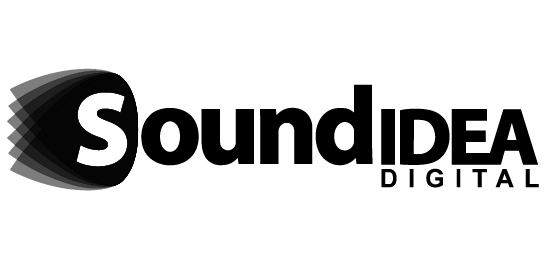
Animation Studio in South Africa: Animation Archetypes
When watching a movie, certain characters immediately convey who they are without a single word. A young lion cub standing on the edge of a rock, eyes wide with uncertainty, immediately gives us the impression that he is on the brink of something greater. In the same breath, a dark, towering figure in a long black cape, barely illuminated by flickering light, leaves no doubt that he is up to no good. These impressions are not random; they stem from character archetypes that have been ingrained in storytelling for centuries. Character archetypes shape the way we perceive animated characters, influencing everything from their appearance to their movement and interactions. A well-designed hero naturally exudes confidence, while a villain’s sharp, angular features suggest deception before they even speak. This article will explore how iconic characters influence character design, breaking down the most recognisable archetypes in animation and the visual elements that define them. Whether creating a noble protagonist, a wise mentor, or a comic relief character, understanding archetypes helps ensure that characters feel familiar yet distinct. For those looking to develop characters with depth and visual impact, working with an experienced animation studio in South Africa can provide the expertise needed to align design choices with storytelling goals.
What are Character Archetypes?
Character archetypes refer to universal patterns or models of characters that appear in myths, stories, and various forms of media. These archetypes are familiar to audiences because they have been used throughout history and transcend cultural boundaries. Archetypes help guide audiences in understanding the roles and motivations of characters, and they set the foundation for how these characters behave and interact with one another.
In animation, archetypes can help animators design characters that feel familiar yet unique. An animation studio in South Africa, for example, can design a villainous character that embodies the qualities of the classic antagonist archetype, ensuring the audience immediately understands their role within the story.
Common Archetypes in Animation
There are several archetypes that frequently appear in animated films and videos. These familiar roles help shape how characters look, behave, and interact within a story, making them instantly recognisable to audiences.
The Hero
The hero is often at the center of the story. They are brave, determined, and often undergo a transformation throughout the film. These characters tend to be relatable, as they represent the qualities that many people aspire to.
Example: Simba from The Lion King. His design is bold, with a regal appearance, strong features, and a colour palette that reflects his growth from a carefree cub to a responsible king. A well-designed hero visually communicates their inner strength and their journey.
The Mentor
The mentor archetype is characterised by wisdom and guidance. Mentors often help the hero navigate challenges and provide them with essential tools or knowledge needed for success.
Example: Mufasa from The Lion King. As a wise and protective figure, Mufasa’s design uses large, strong features and a warm, golden colour palette that suggests both strength and compassion. The mentor archetype is often visualised through dignified and aged characteristics, reinforcing their role as a teacher.
The Sidekick
Sidekicks are loyal companions who provide support to the hero. They are often more humorous or quirky and are designed to provide balance to the more serious aspects of the protagonist’s character.
Example: Donkey from Shrek. Donkey’s design is exaggerated, with comically large eyes and an expressive face that highlight his playful and talkative nature. The sidekick’s design is often more exaggerated in terms of expressions and body language, making them stand out in contrast to the hero.
The Villain
The villain is the primary antagonist of the story, opposing the hero and providing the conflict. Villains are typically designed with features that reflect their malicious intentions, often using dark colours, sharp lines, and exaggerated features.
Example: Scar from The Lion King. Scar’s design features angular features, dark colours, and a thinner, less muscular body than Simba, emphasising his treacherous nature. The villain’s design often contrasts with that of the hero, making their role in the story visually obvious.
The Comic Relief
Comic relief characters add humour and lighten the tone of the story. They often play off the serious moments of the plot, helping to balance intense scenes with laughter. Their design is often playful and whimsical.
Example: Timon and Pumbaa from The Lion King. Both characters are designed with exaggerated features that reflect their humorous personalities. Timon is small and quick, with sharp features, while Pumbaa is larger and more rounded, emphasising his easy going nature.
How Archetypes Influence Character Design
Character archetypes directly influence the visual design of animated characters. Animators rely on archetypes to help define the personality, movement, and overall look of the characters. By understanding these archetypes, an animation studio in South Africa or elsewhere can ensure that characters are instantly recognisable and fulfill their intended narrative roles.
Visual Representation
Each archetype is often paired with specific visual traits that make them easy to identify. For example, heroes are often designed with symmetrical features and bright, inviting colours, signaling their positive role in the story. Villains, on the other hand, may have sharper, more angular features and darker, more muted colours to reflect their antagonistic nature. The importance here is to create a contrast to emphasise the difference in their characters’ dynamics
Personality and Behaviour
Character design is closely tied to the behaviour and personality of the character. The design of a sidekick, for example, may involve exaggerated features and proportions to emphasise their comedic or quirky traits. This visual cue helps the audience immediately understand that this character will provide humour or levity in the story.
Audience Connection
The visual design of a character can help establish an emotional connection with the audience. A well-designed hero can inspire feelings of admiration, while a villain’s design can evoke fear or dislike. Archetypes serve as shorthand for these emotions, making it easier for the audience to connect with the characters. An animation studio in South Africa, by drawing from these established archetypes, can ensure that their characters align with the expectations of the audience and create an emotional connection.
Case Studies of Iconic Animated Characters
Let us examine some well-known animated characters to see how they embody archetypes and shape the design process.
The Incredibles Characters
- Mr. Incredible (Hero): Mr. Incredible’s design is bold and muscular, emphasising his strength and power. His superhero suit is sleek and functional, with a bold “I” logo that immediately signals his heroic role. His strong jaw and confident stance communicate his role as a protector, reinforcing his leadership and heroism throughout the film.
- Elastigirl (Hero): Elastigirl’s design is elegant and fluid, with her stretchy abilities highlighted through her flexible and dynamic poses. Her sleek, form-fitting suit, combined with her ability to stretch, reflects her adaptability and resilience, qualities that make her a strong female protagonist.
- Dash (Sidekick/Comic Relief): Dash’s design emphasises his youthful energy, with a small, energetic frame and an outfit that matches his superhero family. His quick movements and mischievous expressions reinforce his role as the impulsive, comic sidekick of the family, providing humour and lightness throughout the story.
- Syndrome (Villain): Syndrome’s design is angular and sharp, with exaggerated features that highlight his villainous traits. His disheveled hair, dark attire, and the dramatic contrast between his youthful appearance and the malicious actions he takes reflect his role as an antagonist driven by envy and revenge.
Toy Story Characters
- Woody (Hero): Woody’s design is classic and strong, with his cowboy hat, boots, and distinctive sheriff badge giving him a sense of leadership and reliability. His friendly and approachable features immediately signal that he is the hero of the story, and his journey throughout the film highlights his personal growth.
- Buzz Lightyear (Sidekick): Buzz’s sleek, futuristic spacesuit design visually positions him as a heroic figure, but his overly confident personality and comical misunderstanding of his surroundings make him the perfect sidekick. His bold, streamlined appearance contrasts with Woody’s down-to-earth look, adding an element of humour to their dynamic.
- Mr. Potato Head (Comic Relief): Mr. Potato Head’s removable parts and his comedic, exaggerated expressions make him a natural comic relief character. His design plays on the absurdity of his shape-shifting features, reinforcing his humorous, unpredictable role in the group.
- Sid Phillips (Villain): Sid, the antagonist of the film, has a design that emphasises his chaotic and destructive nature. With wild hair, a messy appearance, and a mischievous grin, Sid is immediately recognisable as a villain. His unruly design contrasts with the neat and ordered appearance of the toys, symbolising the danger he poses to them and highlighting the fear they feel when they are outside of their safe space.
Evolution of Archetypes in Modern Animation
In recent years, there has been a trend toward subverting traditional archetypes. Characters are becoming more complex and multidimensional, breaking away from the clear-cut hero-villain dichotomy. For example, in Frozen, Elsa is initially portrayed as the villain due to her powers, but as the story unfolds, she becomes a more nuanced character. Her design reflects her internal struggle and eventual growth, with her icy blue dress symbolising both her power and her emotional journey.
Cultural shifts also influence how archetypes are represented in animation. Today, there is a greater emphasis on diversity, representation, and complex female characters. For instance, characters like Moana and Mulan challenge traditional gender roles and are designed to reflect their independent, strong-willed personalities.
Final Thoughts
Character design in animation is about more than just making someone look interesting—it is about conveying who they are at a glance. Through archetypes, we instantly recognise traits like bravery, villainy, or mischief, even without a word of dialogue. It is why a character’s visual cues can communicate so much about their role and personality.
Take Zootopia, for instance. Judy Hopps’ bright, determined eyes and smart, sleek uniform immediately communicate her ambition, while the gruff, intimidating design of Chief Bogo underscores his no-nonsense leadership. These choices set the stage for the story, making it easy for the audience to follow along and form the right assumptions as the narrative progresses, without giving away too much too soon.
Understanding these visual shortcuts ensures your characters feel relatable and memorable. Whether you need animated content, are developing characters for your brand, or are simply looking for inspiration, incorporating archetypes thoughtfully can make all the difference. If you are working with an animation studio in South Africa, their experienced designers understand these archetypes and can bring innovation to them, staying true to what works and aligns with natural audience assumptions, while ensuring the characters remain unique and not overused.
Think your characters could use a little more personality? At Sound Idea Digital, we’re all about making them memorable. Drop us a message, and let’s create something unique.
We are a full-service Web Development and Content Production Agency in Gauteng specialising in Video Production, Animation, eLearning Content Development, Learning Management Systems, and Content Production.
Contact us for a quote. | enquiries@soundidea.co.za | https://www.soundideavideoproduction.co.za| +27 82 491 5824 |

